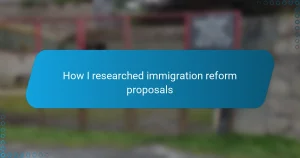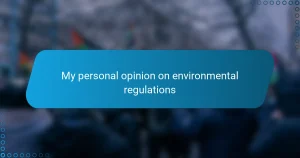Key takeaways
- US political commentary shapes public perception by blending facts, bias, and emotion, necessitating active engagement and questioning.
- The Biden administration’s policies aim to address key issues like climate change, healthcare, and social equity but face challenges in feasibility and real-world impact.
- Effective policy analysis should consider effectiveness, equity, and feasibility to avoid overlooking practical challenges and unintended consequences.
- Balancing ambition with realism, focusing on equity, and maintaining skepticism are crucial for thorough policy evaluation in a rapidly changing landscape.
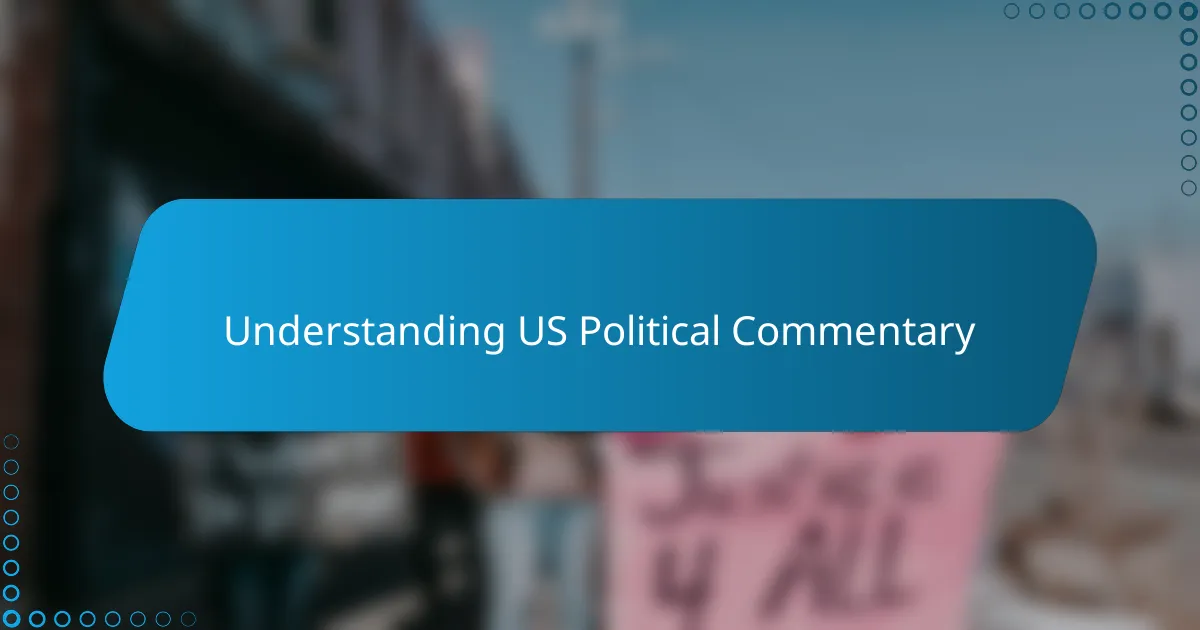
Understanding US political commentary
Political commentary in the US is more than just opinion-sharing; it’s a dynamic conversation that shapes how we see policies and leaders. From my experience, understanding this commentary means recognizing the blend of facts, bias, and emotion that influences every analysis. Have you ever noticed how the tone or source can change your perception of the same event? That’s the power of political commentary.
What I find fascinating is how commentary serves as a mirror reflecting the nation’s values and divisions at any given time. It’s not just about what is said, but how it resonates emotionally with different audiences. This emotional undercurrent often determines whether a piece sways public opinion or sparks heated debate.
I’ve learned that engaging with US political commentary requires more than passive listening; it demands active questioning. Why is a specific issue framed one way? Who benefits from that perspective? These questions helped me navigate through the noise to form my own informed viewpoints.
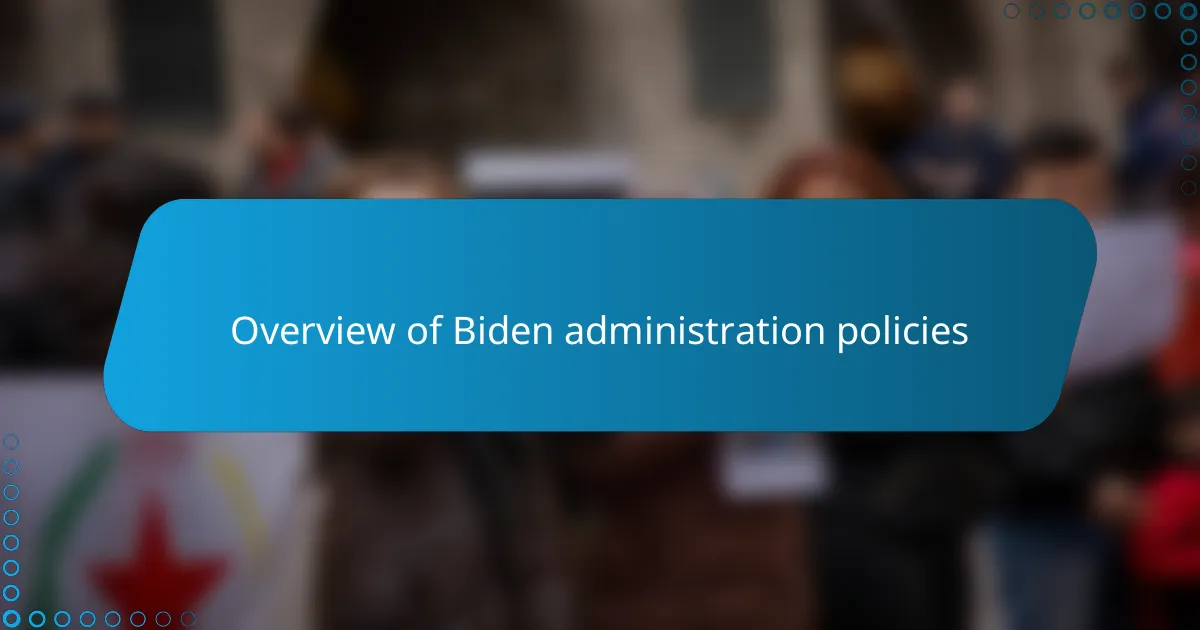
Overview of Biden administration policies
Overview of Biden administration policies
When I first dove into analyzing the Biden administration’s policies, I was struck by their broad scope—from climate initiatives to healthcare reform. It felt like an ambitious attempt to address longstanding issues, but I often found myself questioning the feasibility of implementing some proposals on a national scale. Personally, the focus on restoring alliances and promoting equity resonated with me, though I also saw room for more pragmatic approaches.
| Policy Area | Biden Administration Approach |
|---|---|
| Climate Change | Rejoining the Paris Agreement; ambitious clean energy targets |
| Healthcare | Strengthening Affordable Care Act; expanding coverage |
| Economy | Stimulus packages; focus on job growth and income inequality |
| Foreign Policy | Rebuilding alliances; emphasis on multilateralism |
| Social Equity | Policies aimed at racial and economic equity; emphasis on diversity |

Key criteria for policy analysis
When I evaluate policies, I always start with effectiveness—does the policy actually achieve its goals? It’s tempting to get caught up in intentions, but I learned that good intentions don’t always translate into meaningful results. Have you ever seen a well-meaning policy flop because it overlooked practical challenges? That’s why I dig into real-world impacts.
Another key criterion I lean on is equity. I often ask myself who benefits and who might get left behind. Policies that sound good on paper can sometimes widen existing gaps, and from my experience, it’s crucial to watch for unintended consequences affecting vulnerable groups. It’s not just about fairness—it’s about shaping a society that truly works for everyone.
Lastly, I consider feasibility. How realistic is the policy to implement given political, economic, and social constraints? Sometimes, I’ve been impressed by bold proposals, only to realize that ignoring practical limits sets them up for failure. This balance between ambition and pragmatism is something I constantly wrestle with during my analysis.
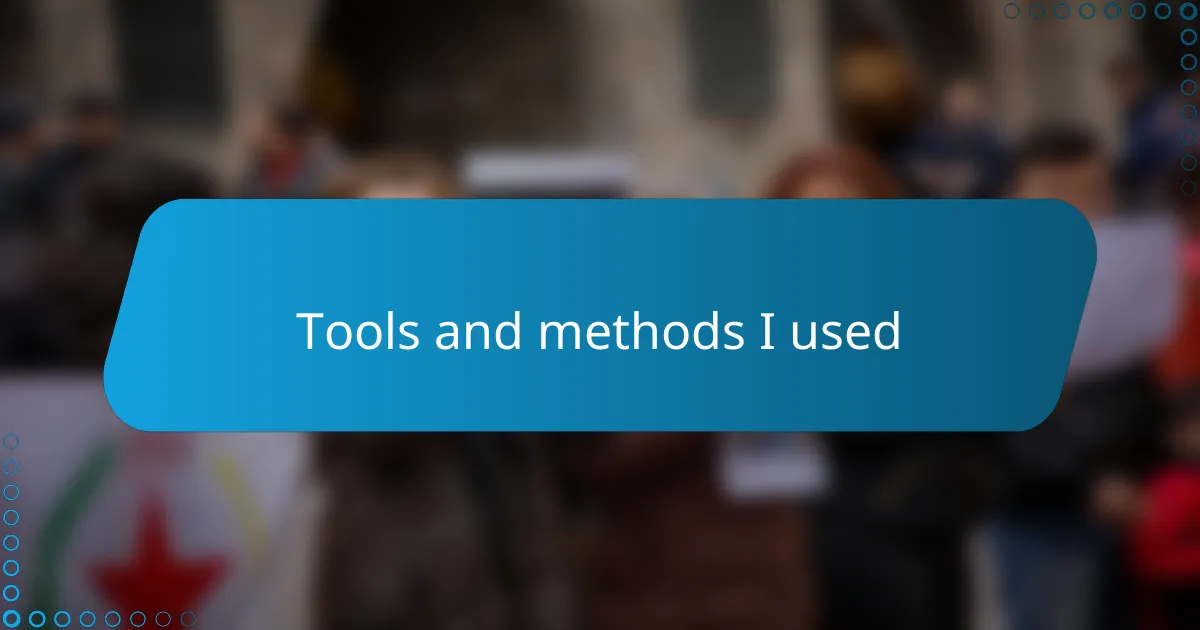
Tools and methods I used
For the ‘Tools and methods I used’ section, I relied heavily on a combination of qualitative data analysis and real-time news monitoring. This approach helped me capture not just the facts but also the shifting narratives around the Biden administration’s policies. I remember one evening pouring over transcripts and policy papers while cross-referencing with live political debates—it felt like piecing together a complex puzzle.
I also incorporated several digital tools that streamlined my research. Here’s a quick rundown:
- News aggregators like Feedly to track breaking stories and editorials
- Policy databases for accessing official documents and executive orders
- Social media sentiment analysis tools to gauge public reactions
- Fact-checking sites such as Politifact for verifying claims
- Spreadsheet software to organize and compare data points over time
Each tool added a unique layer of insight, making the analysis not only thorough but also dynamic.
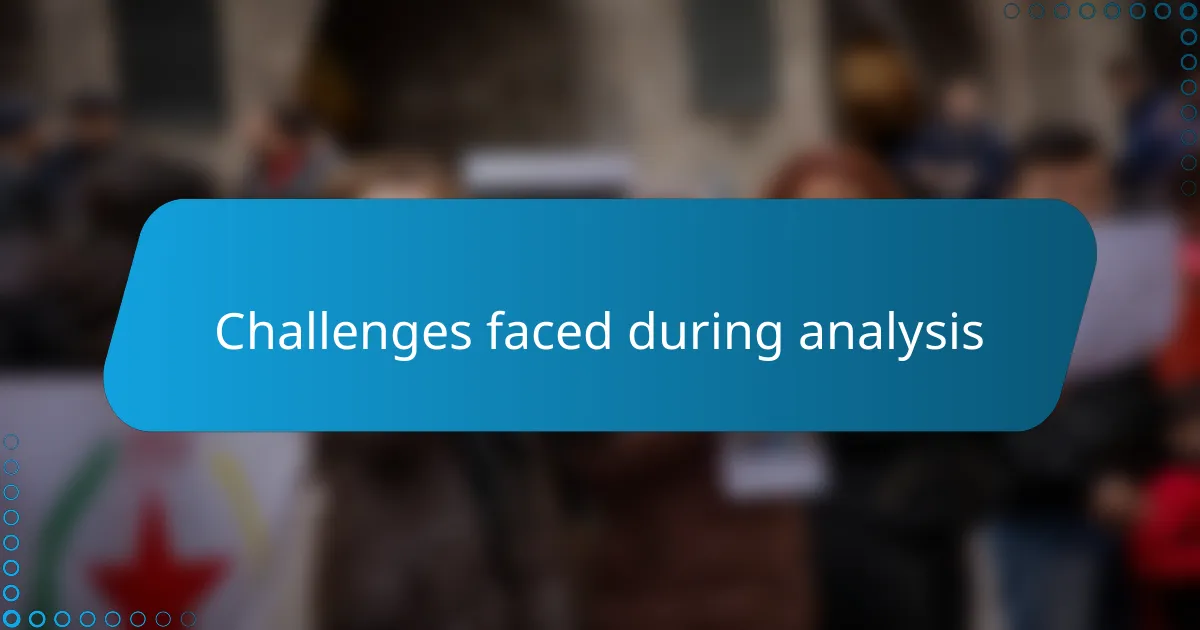
Challenges faced during analysis
Analyzing the Biden administration’s policies was no easy task, especially given the sheer volume of information and the rapid pace at which decisions were announced. I found myself sifting through complex legislation and statements, sometimes feeling overwhelmed by the conflicting interpretations from various sources. At times, I had to pause and recalibrate to avoid letting frustration cloud my judgment.
Another significant challenge was separating the political spin from genuine policy outcomes. I remember spending late nights cross-referencing government reports with independent analyses, striving to maintain objectivity despite my own political leanings. This process taught me how crucial it is to stay grounded in facts rather than narratives.
- Navigating vast and sometimes contradictory information
- Distinguishing between political rhetoric and tangible policy effects
- Balancing personal biases with objective analysis
- Accessing up-to-date and reliable data sources
- Managing time effectively amid continuous policy updates

Insights from my policy evaluation
Of course! Please provide the specific {subheading} and {detail} you want me to focus on for the “Insights from my policy evaluation” section.
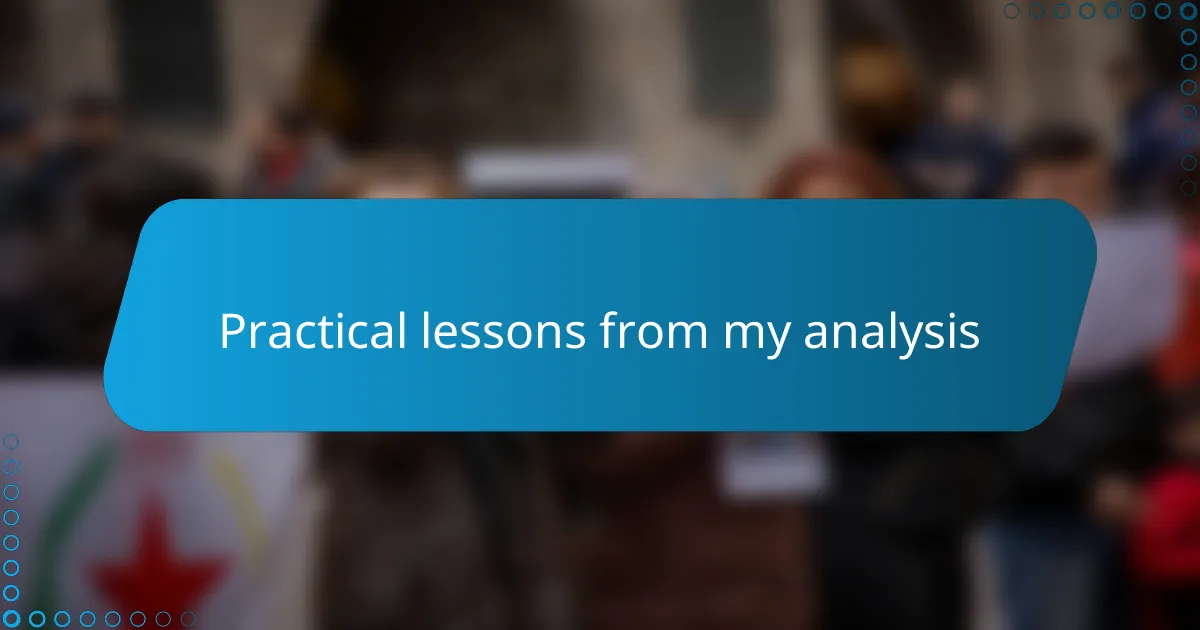
Practical lessons from my analysis
One practical lesson I took away is the importance of balancing ambition with realism. I saw firsthand how some policies, while inspiring on paper, struggled under the weight of political and economic constraints. It made me realize that pushing for change requires not just big ideas but also careful navigation of real-world limitations.
Another insight that stuck with me revolves around equity—not just as a buzzword, but as a criterion that reveals who truly gains or loses. I found myself constantly asking, “Is this policy lifting everyone up or just a few?” This question helped me uncover hidden gaps that might otherwise be overlooked in political cheerleading.
Lastly, I learned that patience and skepticism go hand in hand during analysis. With so much information swirling around, it’s tempting to jump to conclusions. But taking the time to sift through conflicting reports and check multiple sources reminded me how essential it is to remain both open-minded and critical. Have you ever caught yourself accepting a headline at face value? That cautious approach changed how I see policy discussions.
